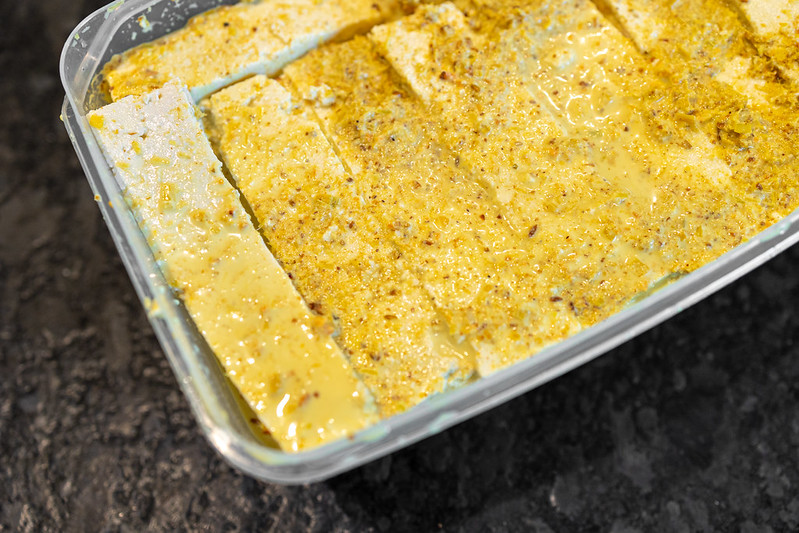Tofu Satay
Looking back at old recipes often presents a quandary—if it's something I know I can improve on today, do I update the old recipe, or opt for a new version. For making sure whatever recipe is being used by a reader is the best it can be, the former makes sense, but on a personal level, I find value in seeing where I've been, and usually end up choosing the later path. Going that direction though often means I need to find a unique take on an old recipe in some manner to avoid a straight-up duplicate. This is exactly how this tofu satay recipe ended up being my fourth Thai satay on this site—chicken, beef, and wings all came before, but this latest recipe represents improvements on all of those.
Those incremental improvements mainly come with being more well versed with Thai cooking, which was a point of concentration for me throughout the pandemic. Where I previously relied on the blender or food processor, along with easy-to-find ingredients, I now assemble most of my Thai pastes in a mortar and pestle and don't shy away from items that may require a special trip the Asian market, like the galangal and palm sugar used here.
While this marinade should be able to be applied to beef, chicken, or pork successfully, I had to take into consideration the unique qualities of tofu when working through all the nuances of the recipe at hand. To start, I selected extra firm tofu, which holds up well to being grilled. I cut the block into long bricks, roughly three-quarters of an inch in width and height, that would ideally thread onto a skewer. I often squeeze excess moisture from tofu before grilling, byt this time I did not since I didn't see much of a purpose if I was just going to be introducing it to a pretty liquid-y marinade.
To marinate the tofu, I placed the strips in a plastic container and poured in the marinade. I gently turned each piece so it would be completely covered. I did this in batches since it would have been difficult to accomplish if all pieces of tofu were stuffed in all at one time with little space left for maneuvering.
I let the tofu sit in the marinate overnight, and during that time, I put together the peanut dipping sauce. I had been using a recipe from Cook's Illustrated that I loved for this dipper for years, but took this opportunity to build the sauce with more traditional Thai ingredients than that original recipe utilized. One thing to remember here is that red curry paste often includes shrimp paste, so if you want to keep this recipe completely vegetarian (as I did), you either need to find a brand that does not contain shellfish or make your own curry paste, which would only make this sauce all the better in the end.
To cook the tofu which I had skewered, I utilized a two step process that has worked for me time and again. It required a two-zone fire where all the coals were situated on one side of the charcoal grate. Then I placed the skewers on the cool side of the grill and covered. During this roasting phase, the exterior of the tofu dries out, which makes it easier to move and work with going forward.
It took about 15 minutes for the outside of the tofu lose enough moisture that it began to brown. At this point, it will brown very effectively over high heat without a lot of fear of sticking, so I moved the skewers over the hot side of the grill and let them cook, flipping them often, until they were well browned all over.
After letting them cool a bit, I served the skewers with the peanut butter sauce for dipping. I used to be a tofu naysayer, but have since come to enjoy it in recent years, and this satay is a perfect example why. Since tofu is such a blank slate, the flavors of the marinade were more upfront than on chicken or beef. The tofu had a great lemony and herbal taste with an earthy undertone delivered by the cumin and coriander, along with a little kick provided thanks to the white pepper. The texture was also something worthy to write home about with an outer crispness that gave way to a tender and still juicy inside. The peanut sauce may have been the real winner here though as my friends kept going back for more, slathering it on many of the other dishes I made that day, even if that was not the original intent. So while this recipe represents my fourth take on satay on this site, each one tells its own story of growth, and having that history is something that I really enjoy in a project that's now almost two decades old.










